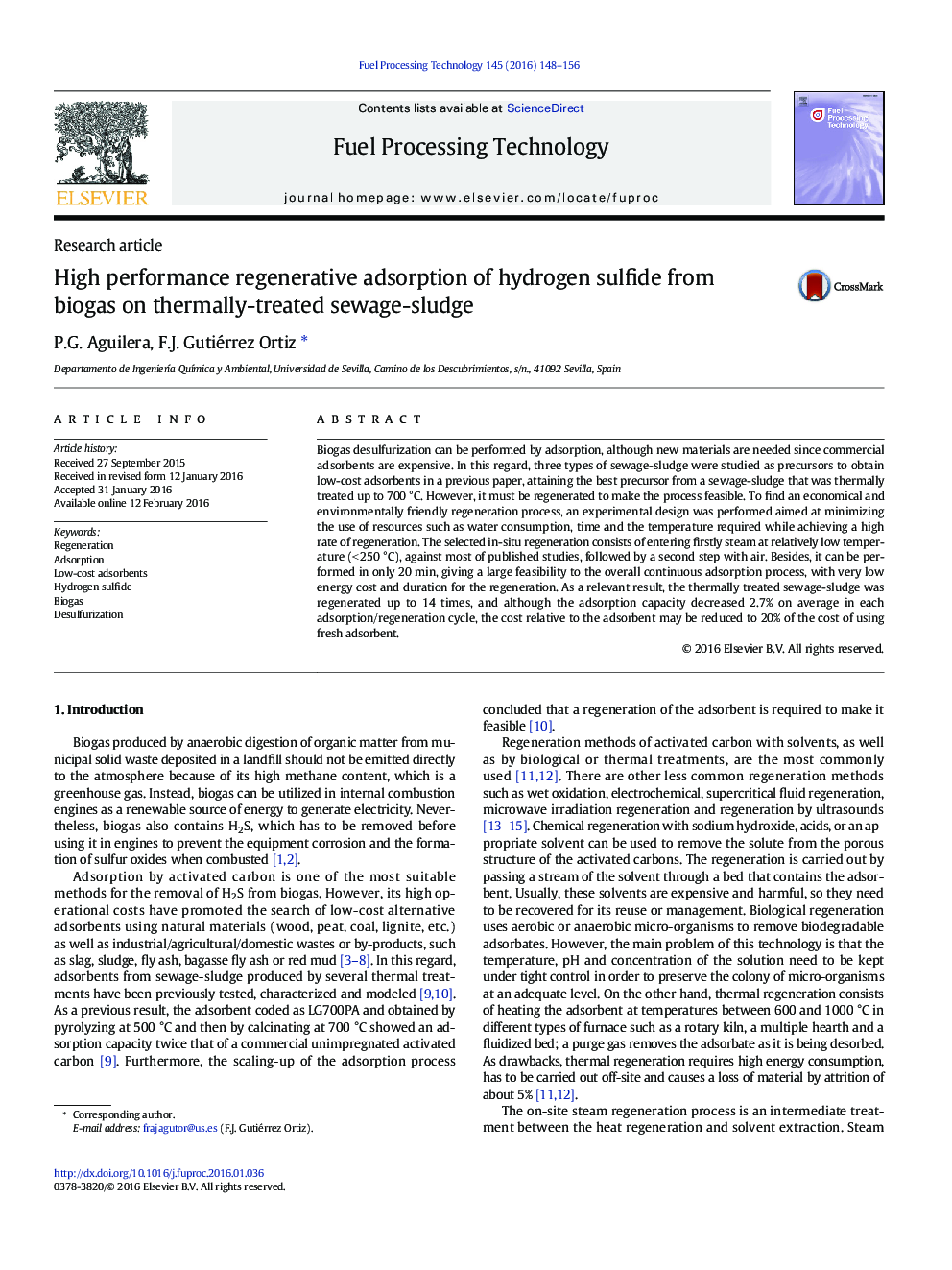| کد مقاله | کد نشریه | سال انتشار | مقاله انگلیسی | نسخه تمام متن |
|---|---|---|---|---|
| 209144 | 461657 | 2016 | 9 صفحه PDF | دانلود رایگان |
• A new efficient regeneration process of adsorbent to remove H2S from biogas is described.
• The on-site regeneration minimizes the duration and energy cost.
• The cost relative to the adsorbent may be reduced to 20% of the cost of using fresh adsorbent.
• The studied regenerative adsorption process shows a high feasibility.
• Regenerated adsorbents were completely characterized and results are fully discussed.
Biogas desulfurization can be performed by adsorption, although new materials are needed since commercial adsorbents are expensive. In this regard, three types of sewage-sludge were studied as precursors to obtain low-cost adsorbents in a previous paper, attaining the best precursor from a sewage-sludge that was thermally treated up to 700 °C. However, it must be regenerated to make the process feasible. To find an economical and environmentally friendly regeneration process, an experimental design was performed aimed at minimizing the use of resources such as water consumption, time and the temperature required while achieving a high rate of regeneration. The selected in-situ regeneration consists of entering firstly steam at relatively low temperature (< 250 °C), against most of published studies, followed by a second step with air. Besides, it can be performed in only 20 min, giving a large feasibility to the overall continuous adsorption process, with very low energy cost and duration for the regeneration. As a relevant result, the thermally treated sewage-sludge was regenerated up to 14 times, and although the adsorption capacity decreased 2.7% on average in each adsorption/regeneration cycle, the cost relative to the adsorbent may be reduced to 20% of the cost of using fresh adsorbent.
Figure optionsDownload as PowerPoint slide
Journal: Fuel Processing Technology - Volume 145, May 2016, Pages 148–156
